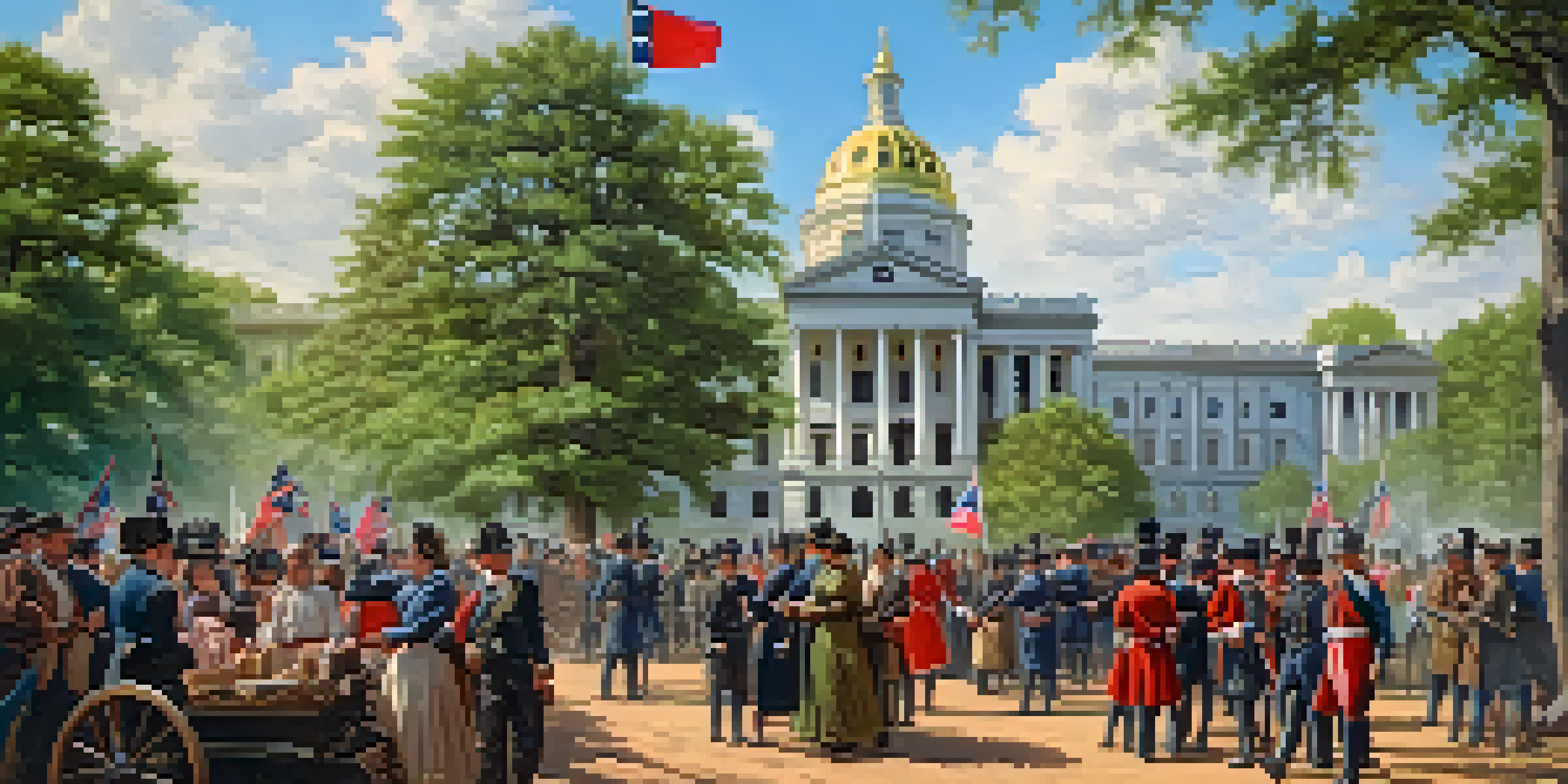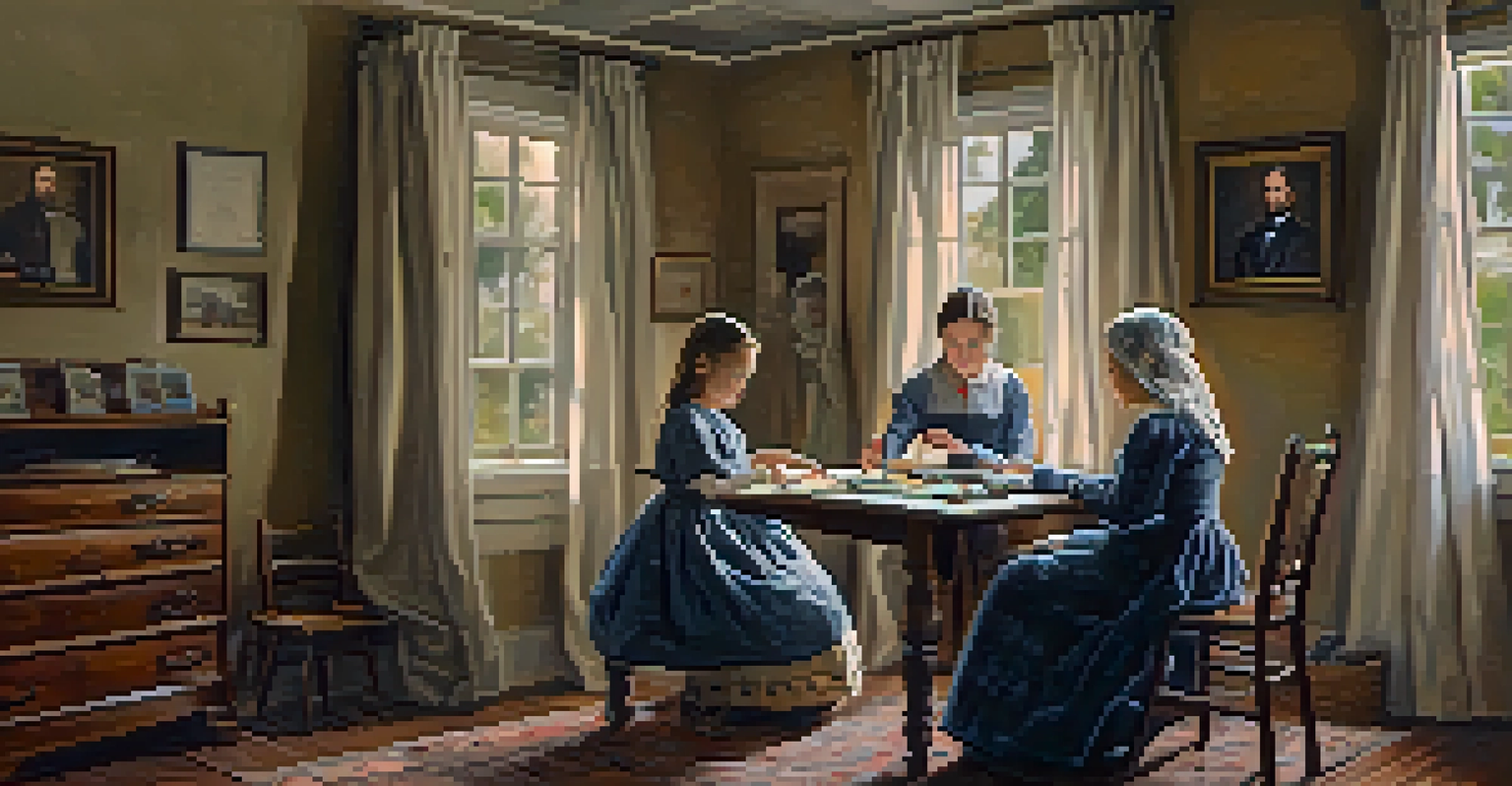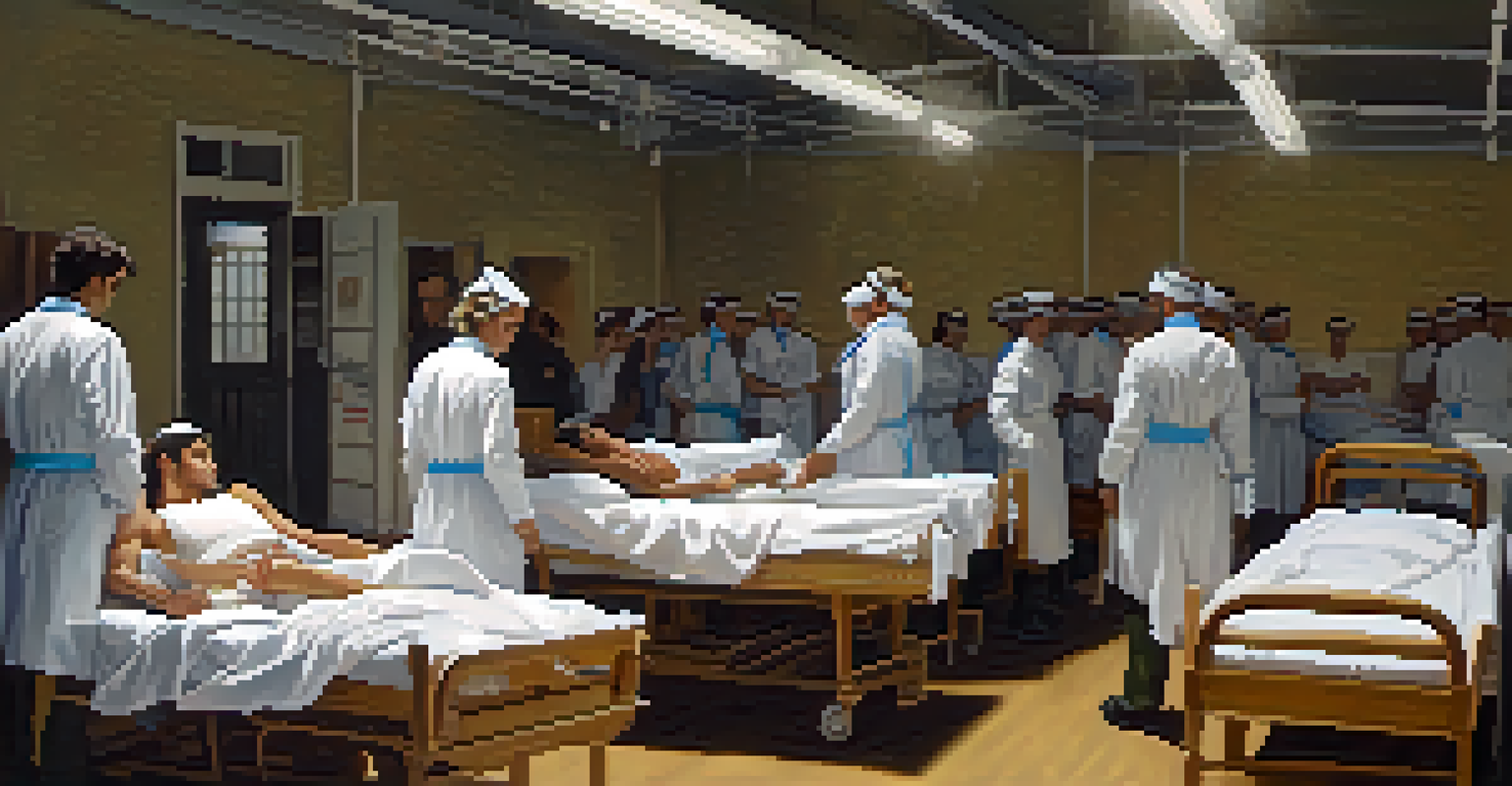Raleigh's Role in the Civil War: A City Divided

Introduction: Raleigh's Strategic Importance in the Civil War
During the Civil War, Raleigh, North Carolina, served as a critical hub for the Confederacy. Its location in the heart of the state made it a strategic point for logistics and military movements. The city's railroads, especially the North Carolina Railroad, allowed for quick transport of troops and supplies, which was vital for the Southern war effort. As the capital of North Carolina, Raleigh also became a political center where key decisions affecting the war were made.
The Civil War was not only a battle of arms, but a contest for the hearts and minds of the people.
However, what set Raleigh apart was not just its strategic advantages but also its divided loyalties. Many residents supported the Confederacy passionately, while others held Union sympathies. This internal conflict created a unique atmosphere in the city, reflecting the broader national struggle that was tearing the country apart.
Understanding Raleigh's role in the Civil War requires acknowledging these complexities. The city's interactions, both military and civilian, were marked by tension and conflict, embodying the very essence of a nation grappling with its identity.
The Confederate Capital: Raleigh's Government and Leadership
As the capital of North Carolina, Raleigh was home to the state's Confederate government. Governor Zebulon Vance played a significant role during this time, advocating for the state's interests while dealing with the challenges of war. His leadership was crucial in rallying support for the Confederate cause, as he worked to ensure that Raleigh remained a stronghold for Southern ideals.

The government set up in Raleigh was tasked with mobilizing resources and troops for the war effort. With the constant pressure of Union advances, the city's leadership had to make quick decisions that impacted not just Raleigh but the entire state. This was a time of intense pressure, and the stakes were incredibly high as the leaders navigated the turbulent waters of war.
Raleigh's Strategic Role in the War
As the Confederate capital, Raleigh served as a crucial logistical hub for military movements and political decision-making during the Civil War.
Raleigh's government also faced the challenges of growing dissent among its citizens. Not everyone aligned with the Confederate cause, leading to heated debates and conflicts that showcased the city's internal divisions.
Raleigh’s Civilian Life: A City Split by War
Life in Raleigh during the Civil War was anything but ordinary. The city was a microcosm of the larger conflict, with families divided over their loyalty to the Union or the Confederacy. This division created an environment fraught with tension, as neighbors found themselves on opposite sides of a war that was deeply personal.
History is not a burden on the memory but an illumination of the soul.
Women in Raleigh played a crucial role during this time, often stepping into traditional male roles as men went off to fight. They organized aid societies, provided support for soldiers, and even took part in protests against the war. Their contributions were vital in keeping the home front strong, yet their experiences were laden with the emotional weight of loss and uncertainty.
Raleigh's social fabric was tested as the war progressed. The struggles of daily life, coupled with the looming presence of conflict, shaped the community's identity, forcing residents to confront their beliefs and loyalties.
Military Engagements: The Battles That Shook Raleigh
Raleigh itself saw limited direct military action during the Civil War, but its proximity to key battles made it a strategic location for troop movements. Union forces aimed to capture Raleigh, leading to heightened tensions and a sense of impending conflict among the city's residents. These military maneuvers created an atmosphere of suspense, with citizens anxiously awaiting news from the front lines.
The most significant military event near Raleigh was the Battle of Bentonville in March 1865, where Confederate forces attempted to halt Union advances. While this battle occurred southwest of the city, the implications were felt strongly in Raleigh. The fear of invasion led to increased military presence and fortifications around the city, further reflecting the ongoing struggle.
Civilian Life Amidst Division
The war deeply affected Raleigh's residents, leading to a community split by loyalties and the significant contributions of women on the home front.
Despite the lack of major battles within the city limits, Raleigh became a crucial point for injured soldiers returning from the front. Hospitals and makeshift care facilities sprang up, and the community rallied to provide support, showcasing a spirit of resilience amidst the chaos of war.
The Role of African Americans: Enslaved and Free in Raleigh
The Civil War era was a pivotal time for African Americans in Raleigh, both enslaved and free. Enslaved individuals faced the harsh realities of their circumstances, often being coerced into supporting the Confederate war efforts, whether through labor or military service. This period was marked by a struggle for dignity and autonomy amidst the oppressive conditions of slavery.
Free African Americans in Raleigh also faced significant challenges during the war. While some supported the Union cause, they were often marginalized and subjected to scrutiny by their fellow citizens. Their actions and loyalties were scrutinized, as they navigated a complex social landscape where their very existence was a point of contention.
As the war progressed and the Confederacy began to crumble, the plight of African Americans transformed. The Emancipation Proclamation offered hope for freedom, yet the reality of liberation was fraught with uncertainty. The war had set into motion a quest for equality that would continue long after the fighting ceased.
The Aftermath: Raleigh Rebuilding After the Civil War
After the Civil War concluded in 1865, Raleigh faced the daunting task of rebuilding. The city had suffered from the ravages of war, both physically and emotionally. The scars left by divided loyalties and conflict were palpable, and the community had to find a way to heal and move forward.
Reconstruction brought about significant changes as Raleigh's citizens worked to redefine their identities. The government began to implement policies aimed at integrating formerly enslaved individuals into society, which was met with mixed reactions from the populace. This period was marked by both hope and resistance, as the city grappled with its past while looking toward the future.
Legacy and Reconstruction Efforts
After the Civil War, Raleigh faced the challenges of rebuilding and redefining its identity, while grappling with the complexities of its past.
Community efforts to restore Raleigh's infrastructure also played a vital role in its recovery. Residents banded together to rebuild homes, schools, and businesses, creating a renewed sense of purpose. Through these collective efforts, Raleigh began to emerge from the shadows of war, slowly reclaiming its place as a vibrant city.
Legacy of the Civil War: Raleigh's Historical Significance
Today, Raleigh's role in the Civil War stands as a testament to the complexities of American history. The city embodies the struggles of a nation divided, with its landmarks and institutions reflecting the rich tapestry of narratives that emerged during this tumultuous time. Understanding Raleigh's past is essential for grasping the broader implications of the Civil War on the South and the nation as a whole.
The memories of those who lived through the Civil War continue to influence Raleigh's identity. Historical sites, such as the North Carolina State Capitol and various museums, serve as reminders of the city's past and its journey toward reconciliation. These sites invite reflection on the lessons learned and the importance of unity in the face of division.

As Raleigh moves forward, it honors its history while embracing the diversity that characterizes its present. The legacy of the Civil War remains a crucial part of the city's narrative, reminding residents and visitors alike of the importance of understanding the past to build a better future.